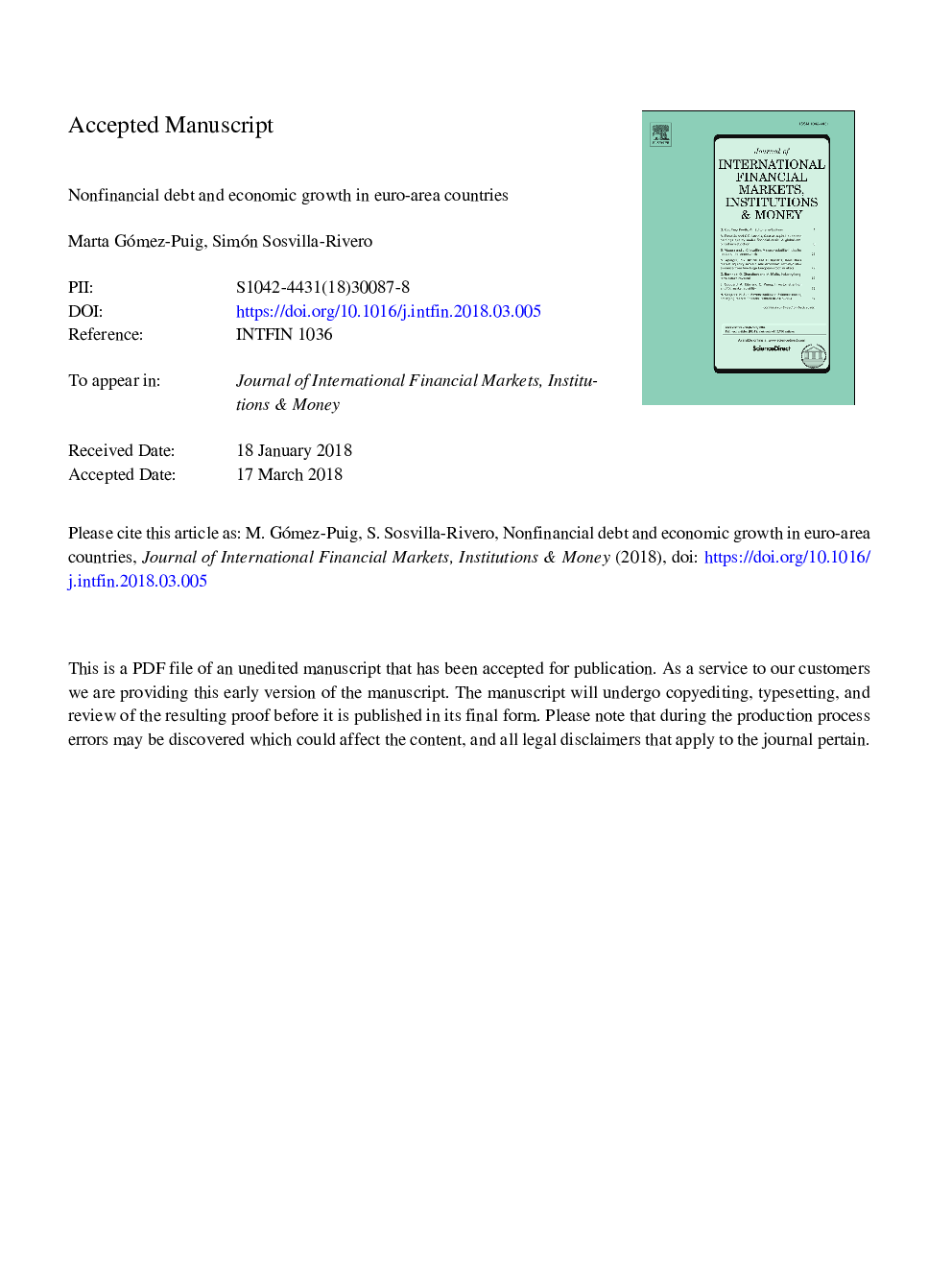| کد مقاله | کد نشریه | سال انتشار | مقاله انگلیسی | نسخه تمام متن |
|---|---|---|---|---|
| 10153684 | 1666222 | 2018 | 39 صفحه PDF | دانلود رایگان |
عنوان انگلیسی مقاله ISI
Nonfinancial debt and economic growth in euro-area countries
ترجمه فارسی عنوان
بدهی غیر مالی و رشد اقتصادی در کشورهای منطقه یورو
دانلود مقاله + سفارش ترجمه
دانلود مقاله ISI انگلیسی
رایگان برای ایرانیان
کلمات کلیدی
ترجمه چکیده
در این مقاله، اثرات همه منابع بدهی غیرمالی (خانوار، شرکت ها و همچنین دولت) را بر رشد اقتصادی در ده کشور منطقه یورو طی دوره 1980-2015 تحلیل می کنیم. برای این منظور، ما از سه مدل (مدل پایه، یک مدل نامتقارن و یک آستانه) استفاده می کنیم که براساس ادبیات تجربی رشد شده توسط بدهی است. با در نظر گرفتن ابعاد سری زمانی به منظور درستی تجربیات تاریخی هر کشوری در نمونه، ما قصد داریم تا ناهمگونی بالقوه در رابطه بین اقتصادهای منطقه یورو را تشخیص دهیم. یافته های ما نشان می دهد که در حالی که آستانه های بدهی عمومی در محدوده بالاتر از کشورهای مرکزی است، آستانه بدهی های خصوصی در کشورهای اصلی منطقه یورو بالاتر است. علاوه بر این، در حالی که کاهش شرکت های غیر مالی و بدهی های دولتی تاثیر ناچیزی بر رشد دارد، واکنش در مورد خانوارها خیلی اهمیت دارد، اما در کشورهای مختلف به طور واضح تفاوت دارد (میانگین تاثیر در محیطی بالاتر از کشورهای مرکزی). بنابراین، طبق نتایج ما، کشورهای حاشیه ای به ویژه باید از عواقب ناشی از انباشت بدهی های خصوصی آگاه باشند و کاهش بدهی های خانوار ها در این کشورها ممکن است برای تحریک مصرف و رشد حیاتی باشد.
موضوعات مرتبط
علوم انسانی و اجتماعی
اقتصاد، اقتصادسنجی و امور مالی
اقتصاد و اقتصادسنجی
چکیده انگلیسی
In this paper, we analyse the effects of all sources of nonfinancial debt (household, corporate as well as government) accumulation on economic growth in ten euro-area countries during the 1980-2015 period. To this end, we make use of three models (a baseline, an asymmetric and a threshold model) based on the empirical growth literature augmented by debt. By exploring the time series dimension in order to properly account for the historical experience of each country in the sample, we aim to detect potential heterogeneities in the relationship across euro-area economies. Our findings suggest that while public debt thresholds are higher in peripheral than in central countries, private debt thresholds are higher in core euro-area countries. Moreover, while a reduction in nonfinancial corporations' and public debt has a negligible effect on growth, the response is very relevant in the case of households but clearly differs across countries (the average impact being higher in peripheral than in central countries). Therefore, according to our results, peripheral countries especially should be aware of the adverse consequences of private debt accumulation and a reduction in households' debt in those countries may be crucial to stimulate consumption and growth.
ناشر
Database: Elsevier - ScienceDirect (ساینس دایرکت)
Journal: Journal of International Financial Markets, Institutions and Money - Volume 56, September 2018, Pages 17-37
Journal: Journal of International Financial Markets, Institutions and Money - Volume 56, September 2018, Pages 17-37
نویسندگان
Marta Gómez-Puig, Simón Sosvilla-Rivero,
